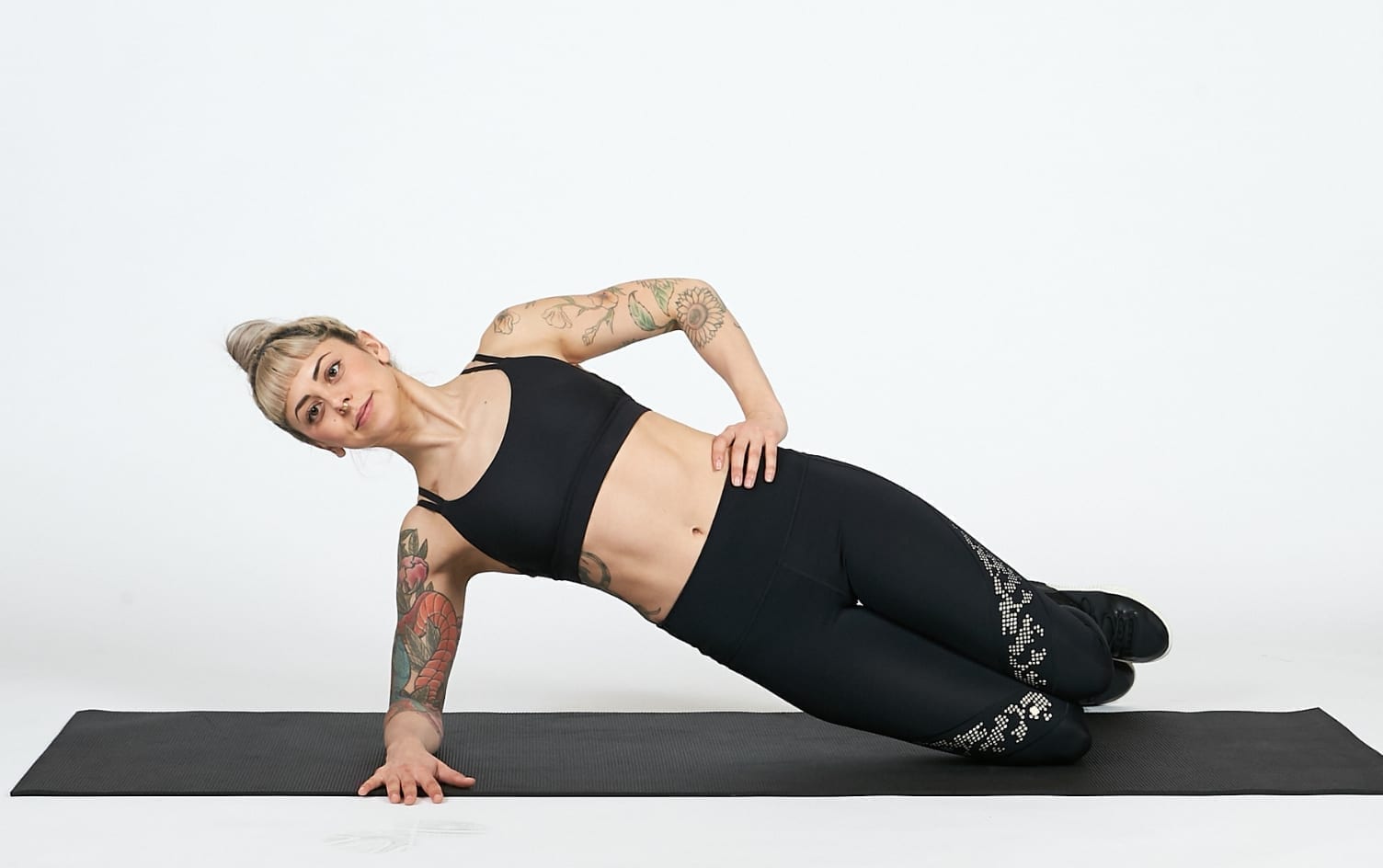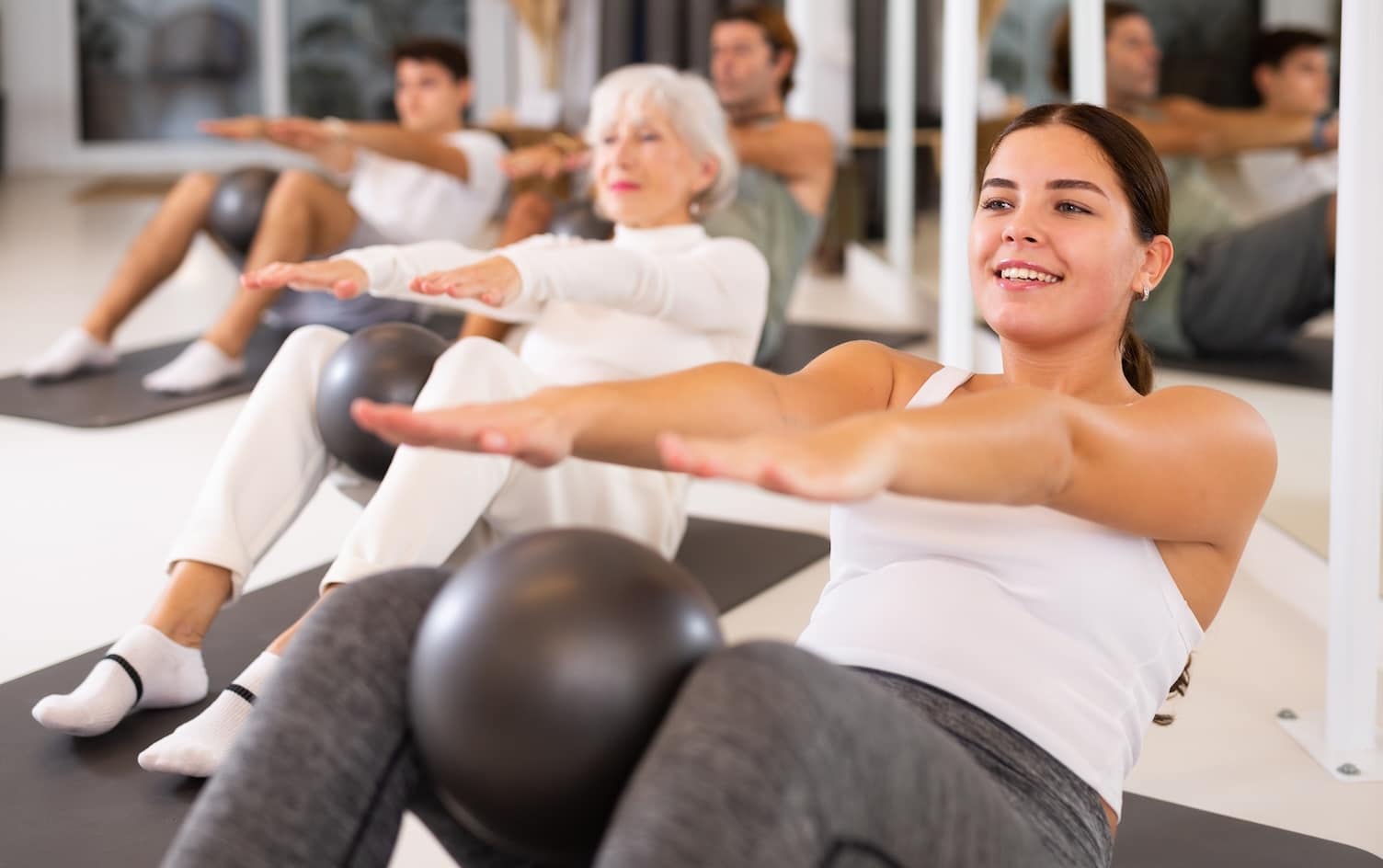If you’ve ever hurt your lower back, you know how much it can affect your life. Whether you’re getting up from a chair, carrying groceries or hoisting a barbell overhead, your lower back is involved in nearly every movement.
While lower back injuries should be treated with the help of a doctor or physical therapist, many cases of lower back pain can be avoided with simple exercises that strengthen the core muscles and teach proper movement of the spine. Stuart McGill, PhD, professor emeritus at the University of Waterloo and the world’s premier authority on spinal health, designed exercises to build a healthy spine.
McGill’s research has been pivotal in helping people understand core training for a healthy spine should focus on stability exercises like planks. Movements that bend the spine like crunches and situps, could even contribute to lower back injuries if performed incorrectly or too often. McGill’s “big three” exercises can be combined into a daily routine that requires no equipment and can be done at home or in the gym.
If you’ve been injured and your doctor has cleared you to work out again, or if you’re perfectly healthy and want to give yourself the best chance to keep your spine pain-free, try these three simple exercises to start building a more resilient spine for all of life’s activities.
MCGILL CURLUPS

Back pain can often be traced to two simple culprits:
1. The lower back itself moves too much.
2. The joints around the lower back (e.g., hips and upper back) don’t move enough.
The McGill curlup teaches you to stabilize your lumbar spine (lower back) using your abs, while moving through the thoracic spine (upper back). The act of pushing the lower back into the floor is how you properly “brace” your abs, so remember how that feels because you should be using it for just about every other exercise you do.
The move: Lie on the floor, face up to the ceiling. Bend one knee until your heel is flat to the floor, a few inches away from your butt. Keep the other leg straight and dig the heel of that foot into the floor, pointing your toes to the ceiling. Place your hands under your lower back and actively push your lower back into your hands to engage your abdominal muscles. Bring your chin toward your chest but keep your head on the ground. Continue to push your lower back into the floor to gently lift your shoulders off the ground. Make sure not to curl your chin toward your chest or let your lower back leave the floor. Perform all your reps on one side, then repeat on the other side.
Sets and Reps: 2 sets of 5–10 reps per side, holding each rep for 3–10 seconds (hold each rep longer to make these more challenging)
BIRD DOGS

The McGill curlup teaches you how to brace your abs, now it’s time to put that stability to the test with bird dogs. This teaches you how to move your arms and legs around a solid core position without moving from your lower back.
The move: Start on your hands and knees with your hands directly under your shoulders and knees directly under your hips. Flatten your back by bracing your abs much like you did with the curlup, but instead of pushing your lower back into the floor, tighten your abs as if someone is about to punch you in the stomach. Reach out with your opposite arm and leg until both limbs are parallel to the floor. Be careful not to arch your lower back — imagine keeping your leg long and low. Repeat with the other arm and leg, making sure to brace your abs on every rep.
If you feel like a fish out of water when doing bird dogs because you’re not quite coordinated enough yet, try them with just your legs first. Once you’re able to lift your leg parallel to the floor without arching your lower back, add in your arms, too.
Sets and Reps: 2 sets of 5–10 reps per side, holding each rep for 1–5 seconds (hold each rep longer to make these more challenging)
SHORT SIDE PLANK

Curlups and bird dogs mostly work your ab muscles on the front of your body: the rectus abdominis and transverse abdominis. But we can’t forget the important oblique muscles, your “side abs.” The short side plank builds strength in your obliques to prevent unwanted twisting and side bending of the spine.
The short side plank resembles a traditional side plank but leaves your bottom knee on the floor for added stability. Think of it as a more user-friendly side plank so you can learn how to properly use your obliques to support your spine.
The move: Lay on your side with your bottom elbow and leg on the floor. Bend your knees until your upper and lower leg form a 90-degree angle. Tuck your bottom elbow tight to your side, squeezing your bottom fist. Lift your bottom hip off the ground while leaving your bottom knee and elbow on the floor. Pull your shoulders back and squeeze your glutes to keep a straight line from your head to your knees. Inhale through your nose and exhale through your mouth for the duration of the exercise. Repeat on the opposite side.
Sets and Reps: 2 sets of 5–10 seconds per side. Even though 10 seconds may seem quick, exhaling forcefully (like you’re blowing up a balloon) can make even just 10 seconds seem challenging.



